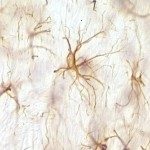Link to Pubmed [PMID] – 10417645
Mol. Microbiol. 1999 Aug;33(3):546-55
The major mechanism by which bacteria acquire free or haemoglobin-bound haem involves direct binding of haem to specific outer membrane receptors. Serratia marcescens and Pseudomonas aeruginosa have an alternative system, which involves an extracellular haemophore, HasA, that captures free or haemoglobin-bound haem and shuttles it to a specific cell surface outer membrane receptor, HasR. Both haem-free (apoprotein) and haem-loaded (holoprotein) HasA bind to HasR, evidence for direct protein-protein interactions between HasA and HasR. HasA binding to HasR takes place in a tonB mutant. TonB is thus required for a step subsequent to HasA binding.


